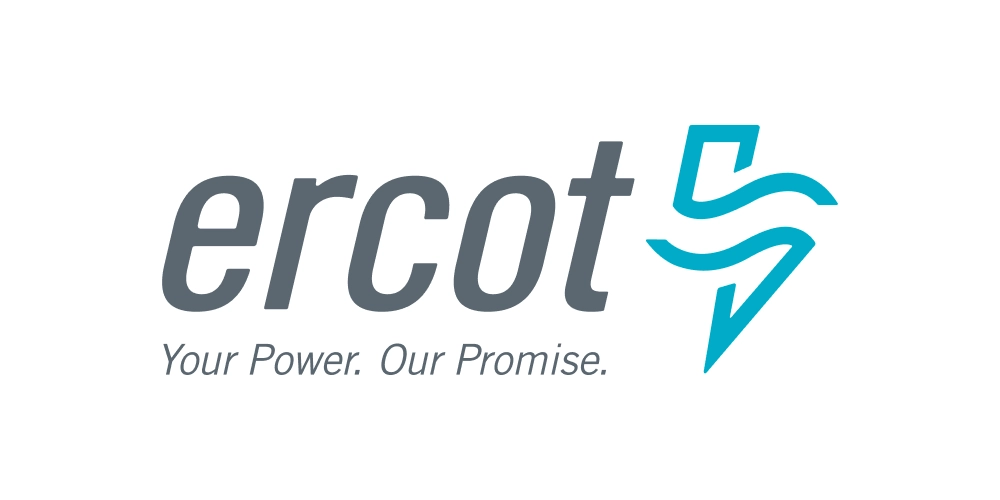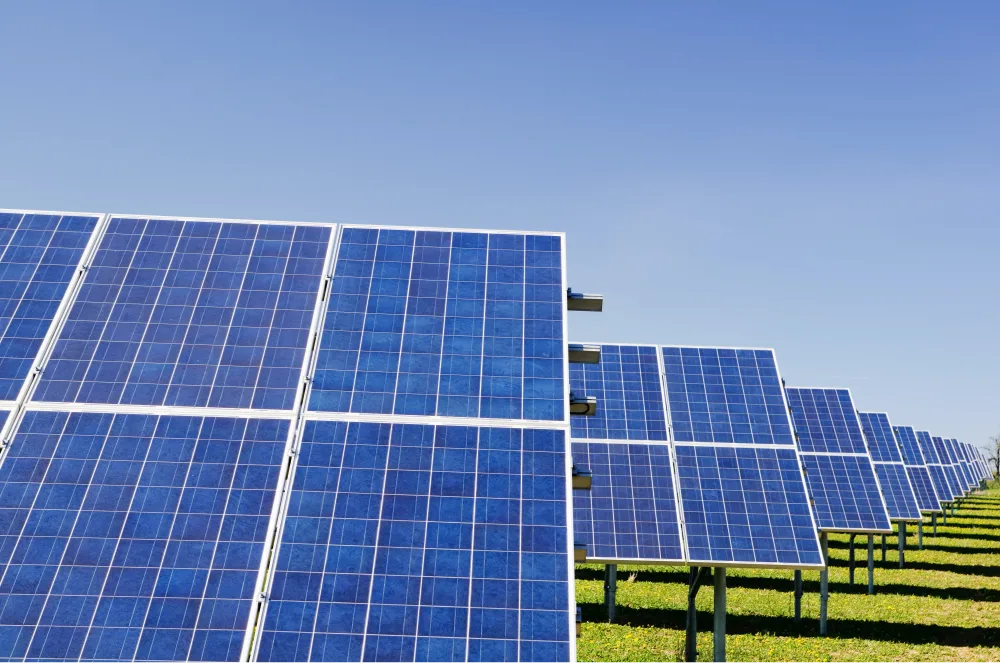Has the Texas Grid Been Winterized?
3 minute readIn February 2021, Winter Storm Uri brought record-breaking cold temperatures to Texas for nearly a week. This storm exposed a
Home > Learning Center > The Deregulated Texas Energy Market > What Is ERCOT? The Texas Power Grid Explained
9 minute read • Last update August 2024

ERCOT stands for the Electric Reliability Council of Texas. This is the organization responsible for managing the Texas power grid. They manage the flow of electricity to 90% of the state, over 26 million Texans. In this guide, we will unravel the intricacies of ERCOT, its role in managing the power grid, and how it affects you as a consumer. Ready to learn more about the world of Texas electricity management?
ERCOT is a 501(c)(4) nonprofit organization responsible for managing the Texas power grid, ensuring reliability and efficiency.
It collaborates with utility companies to monitor supply and demand of electricity in real time, while also facilitating competition in the market.
Texans have freedom to choose from various electricity providers when shopping around for suitable plans.

ERCOT, or the Electric Reliability Council of Texas, is the organization responsible for managing the Texas power grid, ensuring a reliable supply of electricity to millions of Texans. As a nonprofit organization, it operates independently from the Federal Energy Regulatory Commission and oversees the Texas Interconnected System, which constitutes the power grid in the state.
ERCOT’s main duties include:
The story of ERCOT began with World War II, when a group of Texas electric utility companies agreed to work together to form the Texas Interconnected System (TIS) to support efforts in the war. As a result of these efforts, the Texas grid was connected to other grids in the United States to send excess power to the Gulf Coast to empower additional manufacturing and production of supplies.
After the war, realizing the benefit of remaining interconnected members of TIS decided to continue operating as a group.
ERCOT was formed from the TIS in 1970 to comply with requirements from the North American Electric Reliability Council (NERC).
ERCOT was the first independent system operator (ISO) in the United States.
The Texas power grid began to deregulate in 1995.
ERCOT’s primary responsibilities revolve around:
Ensuring a reliable flow of electricity to over 26 million Texas customers
Overseeing the competitive wholesale and retail markets
Guaranteeing open access to transmission
Controlling the flow of electric power from power generators to the customers in order to maintain system reliability.
In addition, ERCOT is responsible for scheduling power for households and coordinating with utility companies to ensure the stability of the electric grid.
ERCOT operates as a membership-based nonprofit organization, overseen by Texas lawmakers and a board of directors. The board is responsible for setting policy and making decisions on behalf of ERCOT, including the integration of renewable energy sources like wind turbines.
The Technical Advisory Committee (TAC), which is supported by five standing subcommittees, as well as various workgroups and task forces, assists the board in its decision-making process.
As a 501(c)(4) nonprofit corporation, ERCOT relies on memberships for its operation. The organization is governed by a board of directors and is subject to oversight by the Public Utility Commission of Texas and Texas lawmakers. This governance structure ensures that ERCOT remains accountable to both its members and the people of Texas.
ERCOT has faced its share of controversies and challenges in recent times. One such incident was a power crisis caused by a deficit in generation capacity and an inability to meet peak demand. This crisis led to the revelation that five board members, who were responsible for overseeing ERCOT, did not reside in Texas, which was against the law. Consequently, these board members resigned.

Probably ERCOT’s biggest scandal was its colossal failure during the 2021 Texas winter storms which left the Lone Star State in utter chaos. With their lack of preparedness and inability to handle the unprecedented weather conditions, ERCOT’s actions (or rather, inaction) led to a catastrophic power outage that left millions of Texans without electricity and heat. There were 246 confirmed deaths as a result of the power outage during the storm, the extreme cold, and a lack of access to essential services.
As the winter storms raged on, ERCOT’s negligence became painfully evident. Instead of taking proactive measures to ensure the stability of the power grid, they chose to ignore the looming threat. Their inability to properly winterize the infrastructure proved to be a costly mistake, as power plants and natural gas facilities shut down one by one, plunging entire communities into darkness.
The consequences of ERCOT’s failure were dire. Hospitals struggled to provide adequate care to patients, while residents desperately sought warmth and shelter. Families huddled together in freezing homes, with no relief in sight.
The aftermath of ERCOT’s failure also exposed the deep-rooted issues within the organization. Questions were raised about their lack of transparency and accountability. How could they have allowed such a preventable disaster to unfold? It became clear that ERCOT’s priorities were skewed, favoring profit over the well-being of the people they were meant to serve.
In the face of this crisis, Texans banded together, showing resilience and compassion. Neighbors helped each other, sharing resources and providing support. Community centers and churches opened their doors to those in need. It was a testament to the strength and unity of the Texan spirit.
The failure of ERCOT during the 2021 Texas winter storms will forever be etched in the memory of Texans. It was a wake-up call, a stark reminder of the importance of preparedness and the need for reliable infrastructure. As the Lone Star State rebuilds and learns from this experience, it is crucial that measures are put in place to prevent such a catastrophe from happening again. The people of Texas deserve nothing less.
Despite these setbacks, ERCOT continues to strive for excellence in managing the Texas power grid and ensuring a reliable supply of electricity, even in the face of challenges like the Texas power crisis.
To manage the Texas power grid effectively and ensure that the Texas power grid works, ERCOT collaborates with utility companies and guarantees equilibrium between supply and demand for electricity. This involves coordinating with utility companies to guarantee the reliability and efficiency of the power grid.
In addition, ERCOT closely monitors the supply and demand for electricity in the Texas power grid and adjusts the supply as necessary to keep them in balance.
In Texas’ deregulated market, ERCOT works closely with electric utilities to maintain power lines and restore outages. Utility companies, such as transmission companies, transport power within ERCOT’s system and are compensated for their services through fees on customer bills from their electric provider.
ERCOT’s primary responsibilities include maintaining power reliability, ensuring open access to transmission lines, and facilitating competitive electricity.
One of ERCOT’s main tasks is to ensure a balance between electricity supply and demand by managing the flow of power through the network on a daily basis. To achieve this equilibrium, ERCOT utilizes real-time data and projections, as well as a program to address operational issues.
They also provide dashboards that offer a comprehensive overview of the current conditions in the system, allowing for proactive management of the power grid to avoid potential issues.

ERCOT plays a crucial role in the integration of renewable energy sources, such as wind and solar power plants, into the Texas power grid. Renewable energy sources account for 29% of the state’s power capacity and are a vital component of the Texas power grid, contributing significantly to the state’s electric load.
As the demand for clean energy grows, ERCOT’s role in managing renewable energy sources becomes increasingly important.
Integrating renewable energy sources into the power grid presents both challenges and opportunities for ERCOT. Some of the challenges include the variable and uncertain nature of renewable energy sources, the need for new infrastructure, and the potential impact on the reliability of the power grid. On the other hand, renewable energy sources offer a reliable backup in extreme situations and may help reduce emissions and improve air quality.
ERCOT strives to balance these challenges and opportunities to provide a stable and sustainable power grid for Texans.
As ERCOT continues to manage renewable energy sources, future developments include:
The adoption of fast-response natural gas turbines, which can rapidly respond to changes in demand for electricity
Hydroelectric units, which provide a dependable source of renewable energy and can store energy for future use
Emerging battery technologies, which offer potential solutions for storing and utilizing renewable energy efficiently.
Advancements in battery technology, such as the development of new types of batteries designed to store energy for future use, will also play a significant role in ERCOT’s management of renewable energy.
In ERCOT’s deregulated market, Texans have the freedom to choose their electricity provider. Over 26 million people. Texans, representing more than 90% of the state’s population, have the option to select the electricity provider of their choice.
This freedom allows consumers to compare prices and plans from various electricity providers to find the best option for their needs.
When choosing an electricity provider, it’s important to understand your options and assess the guarantees provided by the various suppliers. Research providers and their plans online or utilize comparison tools to view plans side-by-side.
By selecting the right retail electric providers, customers can potentially realize cost savings on their energy bills and gain access to renewable energy sources and other advantages offered by various energy companies, including finding the best energy company for their needs.
Switching electricity providers is a simple process managed digitally by ERCOT, allowing for a seamless transition. Once you have selected a provider, you can sign up for their plan, and the transition to your new provider will occur automatically within seven business days.
It is recommended that customers review their options and compare rates and plans before making a decision. This will help ensure that they are getting the best deal for their needs.
ERCOT is the Electric Reliability Council of Texas, an independent system operator responsible for ensuring the reliable operation of the Texas electric grid. It operates by managing electric delivery and payments, scheduling and dispatching electricity, and coordinating power stations and electric utility companies (TDUs).
ERCOT is responsible for ensuring the reliability of the Texas electric grid, and it does this by managing electric delivery and payments, scheduling and dispatching electricity, and coordinating power stations and electric utility companies (TDUs).
ERCOT’s mission is to ensure reliable and competitively priced electricity in Texas by enabling the efficient operation of the electric grid, facilitating market operations, creating positive incentives for infrastructure investment and improving customer service.
The council works to ensure a secure and reliable power supply while ensuring open access to transmission and promoting the competitive nature of the state’s energy market.
ERCOT supplies power to 26 million Texas customers, representing 90% of the state’s electric load. As the state’s electric grid operator, ERCOT acts as traffic control, directing where electricity goes across its network.
No, ERCOT does not sell electricity directly. Instead, it coordinates the flow of power through Texas’ transmission and distribution system, and serves as the central point for the state’s competitive electricity market.
Power generators compete to sell their production in the wholesale energy market and retail electricity providers compete for the end user.
ERCOT ensures a reliable electricity supply for Texas by overseeing the activities of electric utility companies and maintaining balance between electricity generation and consumption.
This includes monitoring the state’s electric grid, ensuring that electricity is generated and consumed in a safe and efficient manner, and ensuring that the grid is reliable and secure.
Graham Lumley, Digital Marketing Manager at BKV Energy, leads digital and traditional marketing strategies, focusing on educating Texans about the state's deregulated energy market. With over 8 years of marketing experience, he creates content to help consumers understand and save on their energy bills, bringing a fresh and dynamic approach to the industry.

In February 2021, Winter Storm Uri brought record-breaking cold temperatures to Texas for nearly a week. This storm exposed a

Switch holds are restrictions placed on electric meters that prevent customers from switching electricity providers. These statuses are meant to
Get $50 off your electric bill!
Use code BKVEJOINUS50
Enter your zip code to shop BKV Energy's affordable, fixed-rate Texas electricity plans. Use the promo code for $50 off your electric bill.